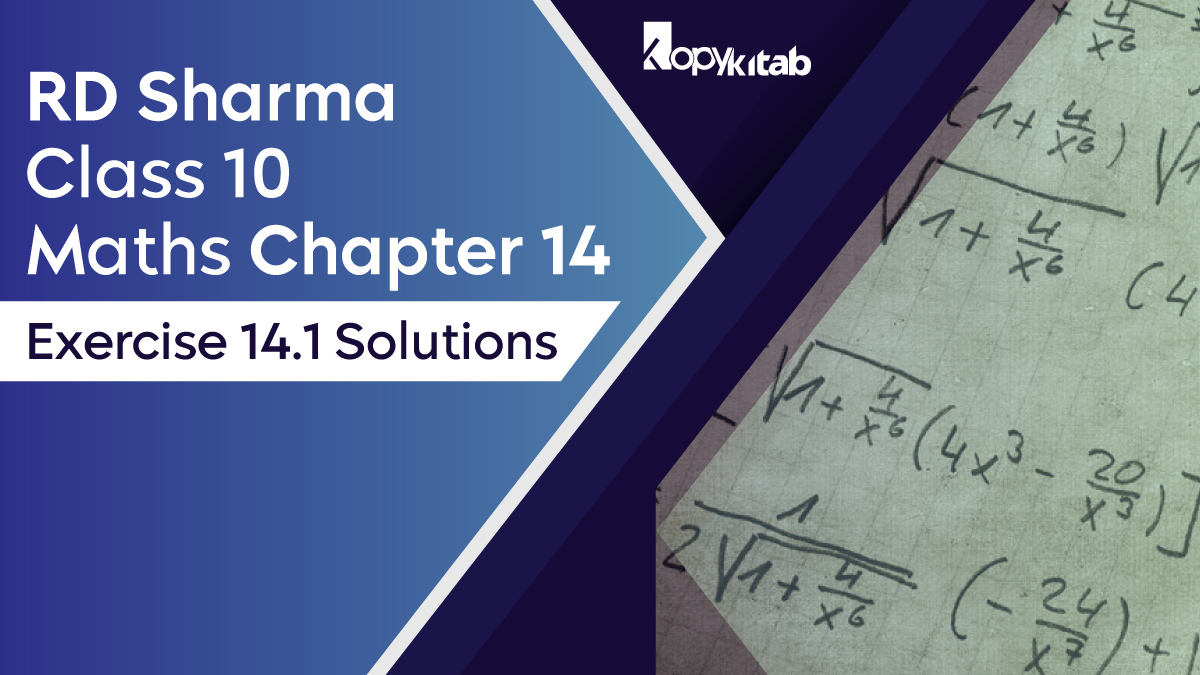RD Sharma Chapter 14 Class 10 Maths Exercise 14.1 Solutions – Surface Areas and Blocks have been prepared by a team of experienced subject matter experts. In this chapter, you will determine the methods for combining the volume and volume of a solid surface by mixing two basic solids, such as cuboids, cones, cylinders, spheres, and hemispheres. You will also learn that sometimes a new solid object can be created by cutting an existing solid object, for example, a corner of the right spherical cone is obtained by cutting its top from a cone.
RD Sharma Chapter 14 Class 10 Maths Exercise 14.1 Solutions: There are 41 questions in this exercise. Questions 1 through 3 and 10 are based on the calculation of the volume of small spheres that combine to give a larger area / cuboid. Questions 4 to 8 and 12 are made on the basis of converting larger cylinders into smaller radius cylinders. Questions 9, 13 and 16 are based on converting a larger sphere into a cylinder with a smaller sphere. Questions 11, 15 and 17 are based on converting a sphere into a cone, and the radius of the cone will be determined. Question 14 is based on converting the cylinder into cuboid. Questions 18 to 41 are similar combinations to ask more complex questions.
Download RD Sharma Chapter 14 Class 10 Maths Exercise 14.1 Solutions
RD SHARMA Solutions Class 10 Maths Chapter 16 Ex 16.1
Important Definition for RD Sharma Chapter 14 Class 10 Maths Exercise 14.1 Solutions
- Surface Area of a Combination of Solids
Here you will learn that the strategy for the determination of the surface area of a combination solid starts with breaking down the figure into smaller solids of known type, and the total surface area (TSA) of the new solid is the sum of the curved surface areas (CSA) of each of the individual small solids. The smaller solids may be hemispheres, cones, and cylinders, among others. Here you also learn that while calculating the surface area, surface areas of the two constituents are not being added, because some part of the surface area disappears while joining them.
- The volume of a Combination of Solids
In this section, you will learn that the volume of the solid formed by joining two basic solid shapes is actually the sum of the volumes of the smaller constituent solid shapes.
- Conversion of Solid from One Shape to Another
In this part, you learn about some objects which are converted from one shape to another. For example, a liquid which originally filled one container of a particular shape is poured into another container of a different shape or size. Here you will learn to determine the volume of the two shapes.
- Frustum of a Cone
This portion teaches about ‘frustum’ of a cone which is a shape formed when we remove a portion of a right circular cone. Consider cutting with a knife, the upper pointed portion of a cone in such a manner that the line of cutting is parallel to the base of the cone. Remove the smaller cone from the upper portion to see the solid shape known as the frustum of the right circular cone, which has two circular ends with different radii.
Here are the various formulae involving the frustum of a cone.
(a) Volume of a frustum of a cone = 1/3 π h (r12 + r22 + r1 r2)
(b) CSA of a frustum of a cone = π l (r1 + r2), where l = √ [h2 + (r1 – r2)2]
(c) TSA of frustum of a cone = π l (r1 + r2) + π (r12 + r22); where h = vertical height of the frustum, l = slant height of the frustum r1 and r2 are radii of the two bases (ends) of the frustum.
Know more at the official website.
